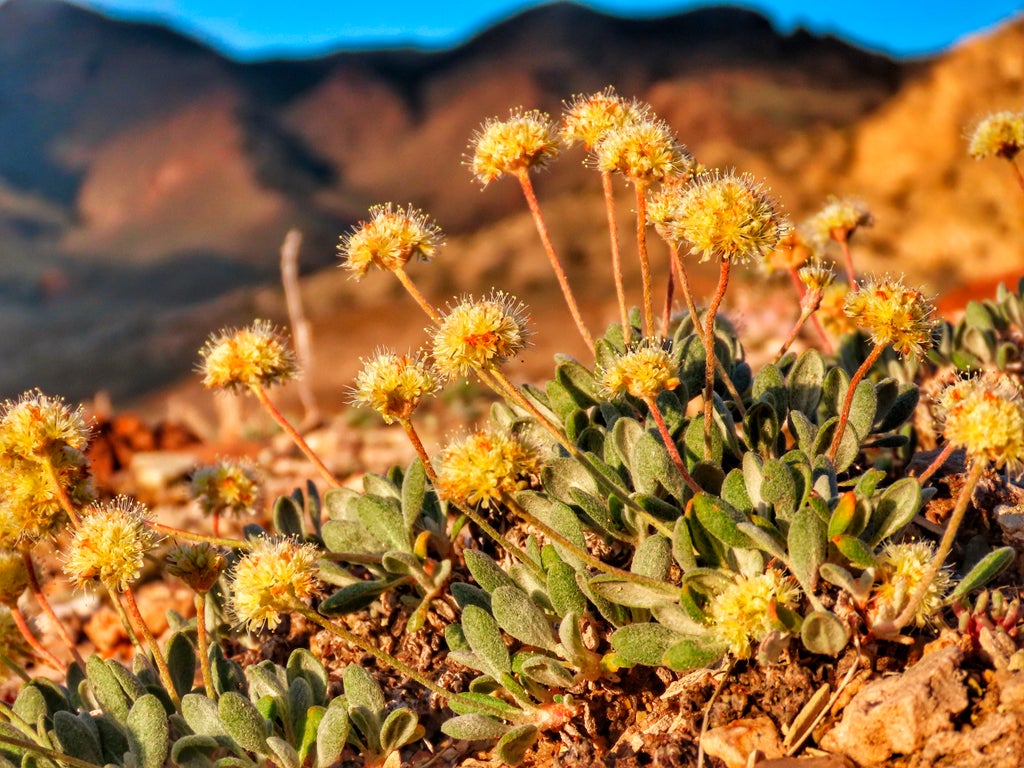
The U.S. Fish and Wildlife Service has proposed designating critical habitat for a Nevada wildflower it plans to list as endangered amid a conflict over a mine to produce lithium batteries for electric vehicles critical to the Biden administration's plans to combat climate change.
The agency on Wednesday proposed designating critical habitat for Tiehm's buckwheat on a high-desert ridge near the California line halfway between Reno and Las Vegas
It's the only place in the world the delicate, 6-inch-tall (15-centimeter) wildflower with yellow blooms is known to exist.
It's also the site where Ioneer USA Corp. plans to build a big lithium mine.
Ioneer said the proposed designation was “an anticipated development” that “has no material impacts on our planned mining activities.”
The Australian-based company noted that mining is allowed within areas designated as critical habitat if approved by the Fish and Wildlife Service and the Bureau of Land Management.
“Ioneer has already taken this into account with its planning and proposed operations and continues to work closely with both agencies to ensure its proposed activities will not jeopardize the conservation of the species,” the company said in a statement.
The Fish and Wildlife Service said in its formal notice of the proposed designation that “this unit is essential to the conservation and recovery of Tiehm’s buckwheat because it supports all of the habitat that is occupied by Tiehm’s buckwheat across the species’ range.”
Conservationists who sued to protect the plant praised the move.
“This proposed critical habitat rule sends a clear message: protecting the native range of Tiehm’s buckwheat is the only way to prevent its extinction,” said Naomi Fraga, the conservation director of the California Botanic Garden, a group that joined the Center for Biological Diversity's 2019 petition to list the plant as endangered.
Unless the Fish and Wildlife Service reverses course because of new information, the plant will be declared endangered in September based on a court order and the agency's final listing rule in October 2021 that concluded that the plant may already be on the brink of extinction.
That listing triggers certain regulatory obligations, such as consulting with the service before any development or other activity that could harm the plant.
The designation also identifies specific habitat that “may require special management and protection” — in this case "to address mineral development, road development and (off-highway vehicle) activity, livestock grazing, nonnative invasive plants species and herbivory,” the agency said.
The plants grow on about 10 acres (4 hectares) — an area about the size of 130 football fields — at Rhyolite Ridge in the Silver Peak range west of the small community of Tonopah, about 200 miles (322 km) from Reno. Fewer than 30,000 are believed to exist.
The 910 acres (368 hectares) proposed for habitat designation — about half a square mile (1.3 square kilometers) — would provide about a 1,650-foot (503-meter) buffer around the plants to ensure access to bees and other pollinators.
Conservationists have argued for a buffer three times larger, while Ioneer suggested less than a tenth of the size proposed by the agency would be sufficient.
The company has said its project has a conservation strategy that includes transplanting some flowers and growing new ones with seeds it gathered as part of a propagation experiment in greenhouses at the University of Nevada, Reno.
Conservationists said the proposed designation reaffirms their contention that won't work, or at least pass legal muster.
“Ioneer’s plans to destroy much of the plant’s habitat and establish it somewhere else are highly unlikely to comport with a critical habitat designation, since the rule recognizes that these areas are essential for the species,” said Patrick Donnelley, the Center for Biological Diversity’s Nevada director.
The Fish and Wildlife Service said Ioneer's conservation strategy remains “in the early stages.” It said Ioneer plans to avoid and fence off half the eight subpopulations, “remove and salvage all remaining plants ... and translocate them to another location.”
But the agency said soil studies and results of greenhouse propagation experiments show there’s a “unique envelope of soil conditions in which Tiehm’s buckwheat thrives that is different from adjacent unoccupied soils.”
“The areas outside the occupied area do not support these physical and biological features and we are not confident that they would support populations of Tiehm’s buckwheat," the agency said.
U.S. Interior Secretary Deb Haaland has the authority to exclude the area from designation if she determines such exclusion would outweigh the benefits, “unless we determine ... failure to designate such area will result in the extinction of the species,” the agency said.







